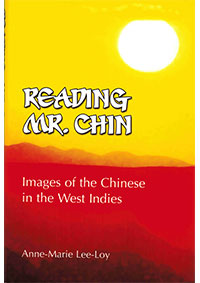Reading Mr Chin: Images of the Chinese in the West Indies
West Indian nations are sites of extensive and multiple migrations that have created societies with high multiethnic concentrations. Additionally, these nations came into existance during the latter part of the twentieth cenury - a period in which nation had become accepted as the only viable means of political organisation in the global arena. As such to participate in global affairs, the former West Indian colonies had no choice but to represent themselves to the world as nations - as unique communities of people who belonged together.
Any articulation of nationhood in these regions began with, and continues to address, the question of how the representation of ethnicity relates to larger conceptualisations of nation. In this regard, images of the Chinese, a minority ethnic group within thse regions, produced within larger discourses of West Indian nationhood provide an important site from which to examine the complex imaginative transactions that are inherent in the process of articulating nationhood.
In Reading Mr. Chin: IMages of the Chinese in the West Indies, Anne-Marie Lee-Loy has produced a fascinating, scholarly and engaging analysis on the:
- concept of the nation as a cultural construction
- representation of the Chinese within colonial discourses
- representation of the Chinese in West Indian fiction
- writings of Chinese West Indian authors

